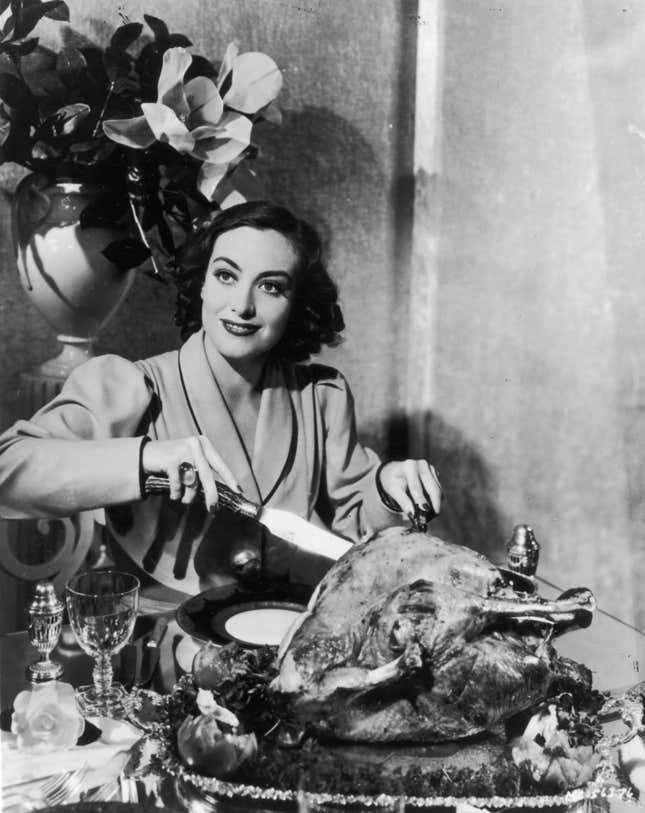
Illustration: Chelsea Beck
As the lush green trees of the Northeast begin to brown and a chill rolls through the now-darkened hours of the early morning, she appears every autumn, like Truth coming out of her well: the white girl who absolutely loves fall.
You know her even if you don’t know her: long hair tucked underneath a premature beanie, swimming in an oversized, off-the-shoulder cozy sweater, knee-high brown suede boots she’s been dying to break in all summer. Maybe she’s taking a selfie with a dreaded Starbucks Pumpkin Spice Latte, or staging a photo shoot at an apple orchard on a still sweltering October Saturday that she’ll perfect on VSCO hours later, accentuating all the right orange and red tones. She puts pumpkins at her doorstep the minute it’s socially acceptable, and she fills her home with a swirl of Yankee Candle scents like “Apple Spice” and “Harvest.” She is “basic,” and she is typically rendered as white.
For the past decade, the basic white girl who loves fall has become so solidified in the cultural imagination that she may as well be the season’s Easter Bunny. Internet memes from the fairly recent “Christian Girl Autumn” to the Pumpkin Spice-loving “basic bitch” discourse of the early 2010s—no matter how derisive—have only made her stronger. But her consistently meme’d existence has roots in American pop culture that extend far deeper than Starbucks orders, formed by decades of magazines, influencers, and entertainment that has connected traditional markers of the Northeastern fall experience with white femininity, bound by nostalgia for simpler times.

In America, the fall season conjures up twin feelings of nostalgia and clean slates simply for its connection to the academic calendar. If the crunch of autumn leaves and sweater weather makes you want to, as Joe Fox says in You’ve Got Mail, “buy school supplies,” it’s because of the strong “back to school” associations baked into your brain. But it’s also a season for the nation to collectively get nostalgic for its own beginnings. Thanksgiving, a holiday defined by whiteness, has been glamorized for more than a century for school children and white families alike.
As David. J Silverman writes in his book This Land Is Their Land: The Wampanoag Indians, Plymouth Colony, and the Troubled History of Thanksgiving, during the 18th and 19th century Thanksgiving was only a regional holiday and celebrated largely in New England. It had no actual link to Pilgrims and Native Americans and only gained that reputation after Reverend Alexander Young noted that a 1621 gathering between English Pilgrims was “the first Thanksgiving” in an 1841 book about the event. Plymouth then seized on the opportunity to celebrate the Pilgrims in a bid for tourism, cultivating the myth of a joyous and peaceful feast as opposed to what really happened, which is that the Wampanoag tribe settled there had already been displaced, murdered, and ravaged by plagues Europeans brought over.
By the late 19th century, Thanksgiving’s history—and by extension, the history of America’s founding—had been white-washed. The all-American, traditional Thanksgiving as we know it in 2020 was only adopted nationwide with the help of Sarah Josepha Hale, a novelist and enthusiastic white woman who was a proto-influencer for popularizing the holiday. Hale began lobbying in the late 19th century for the United States to make Thanksgiving a national holiday. Hale wrote about her family Thanksgivings growing up in her 1827 novel Northwood, in which she describes eating a big roasted turkey and pumpkin pie. But she also wrote about the importance of autumn and celebrating the holiday beyond the Pilgrim myth. One character in her book says, “autumn is the time when the overflowing garners of America call for this expression of joyful gratitude.”
Hale gained an even larger platform when she began editing the women’s magazine Godey’s Lady’s Book. “By the time Thanksgiving became a national holiday, Hale—and her popular magazine—had already planted the idea in women’s heads across the nation that this is something they would want to do,” Alice Roth wrote in a piece for Vice. Hale published editorial after editorial explaining how needed the official holiday was, emphasizing the idea that Thanksgiving would create a sense of unity during the Civil War. Eventually, her wish was granted by Abraham Lincoln in 1863, and Hale’s vision of Thanksgiving, a celebration to commemorate the bountiful harvest of fall that totally obscured the holiday’s violent roots, was solidified. Even after, Hale stressed how important the holiday was to women. “Should not the women of American have one festival in whose rejoicings they can fully participate?” she wrote in 1876.

Into the 1900s, Thanksgiving’s importance as a time to celebrate domesticity and white, all-American nationalism would expand. As Elizabeth Pleck writes in “The Making of the Domestic Occasion: The History of Thanksgiving in the United States,” the 1924 Macy’s Day Parade and similar parades helped accelerate the commercialization of the holiday and its coronation as a “domestic occasion.” “The ideology of domesticity, the cultural and economic anxieties and dislocations of the industrial and commercial revolutions played a significant role,” Pleck writes. “Middle-class women found the idea of the domestic occasion an affirmation of their nurturing role in the family, and an opportunity for kin to reunite.” Thanksgiving was billed as an opportunity to assimilate immigrants into American tradition, but the holiday feast was still largely celebrated by the financially privileged, particularly those who could actually afford the shiny turkey centerpiece. Pleck notes that in 1900, Black families may have been going to church services for the holiday, but they weren’t partaking in the feast the way white families were, because they still saw Thanksgiving as a largely religious celebration.
-

-

-

-

-

-

-

-

-

-

-

-

-

-

-

-

-

-

-

-

-

-

-

-

-

-

-

-

-

-

-

-

-

-

-

-

-

-

-

-










































